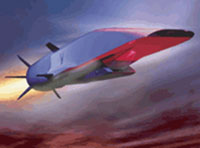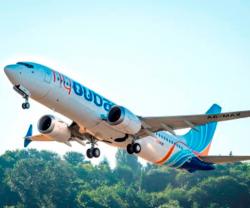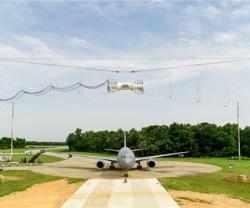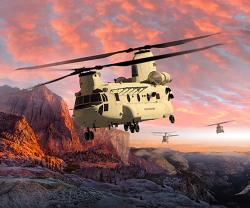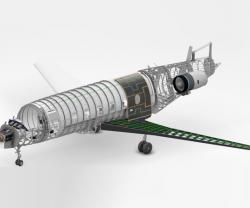The US military conducted an unmanned test flight of its hypersonic Waverider aircraft, designed to move at 6 times the speed of sound using technology that bridges the gap between planes and rocketships, a military official said.
A B-52 bomber launched the remotely monitored, nearly wingless experimental aircraft, officially known as the X-51A, John Haire, a spokesman for the 412th test wing at Edwards Air Force Base in California said.
The plan had been to conduct the test flight over the Pacific Ocean after a staging at Edwards, said Deborah VanNierop, a spokeswoman for Boeing Co., which was involved in constructing the craft, said.
The Waverider is designed to reach speeds of Mach 6 or above, fast enough to zoom from New York to London in less than an hour. But rather than commercial air travel, the military has its eye on a more readily achievable application - using it to develop high-speed cruise missiles.
The X-51A was launched off the coast of California near Naval Air Station Point Mugu, which is northwest of Los Angeles, Haire said. It flew north over the Pacific through a range that is designed for test flights.
“The X-51 is not retrievable, in other words once you fly it, it's going to end up in the ocean,” Haire said.
The aircraft is known as the Waverider because it stays airborne, in part, with lift generated by the shock waves of its own flight.
Pratt & Whitney Rocketdyne designed the X-51A's “scramject” engine, which uses the forward motion of the craft to compress air for fuel combustion, according to a description of the project from the military.
After being dropped from the B-52, a solid-rocket booster is used in the initial phase of the plane's flight to bring it up to speeds that can allow its scramjet engine to take over, by inhaling air through the craft's forward momentum.
In 2004, NASA reached a speed of Mach 9.6, or nearly 7,000 miles per hour (11,265 kph), with a jet-powered aircraft. But that vehicle, known as X-43, only flew for a few seconds and its copper-based engine was not designed to survive the flight.
Engineers have hoped to see the hypersonic X-51A travel for 5 minutes of powered flight. For protection from extreme heat, it uses insulation tiles, similar to those on the NASA space shuttle orbiters, according to a 2011 military description of the project.
Hypersonic flight is normally defined as beginning at Mach 5, which is 5 times the speed of sound.
Source: Reuters

